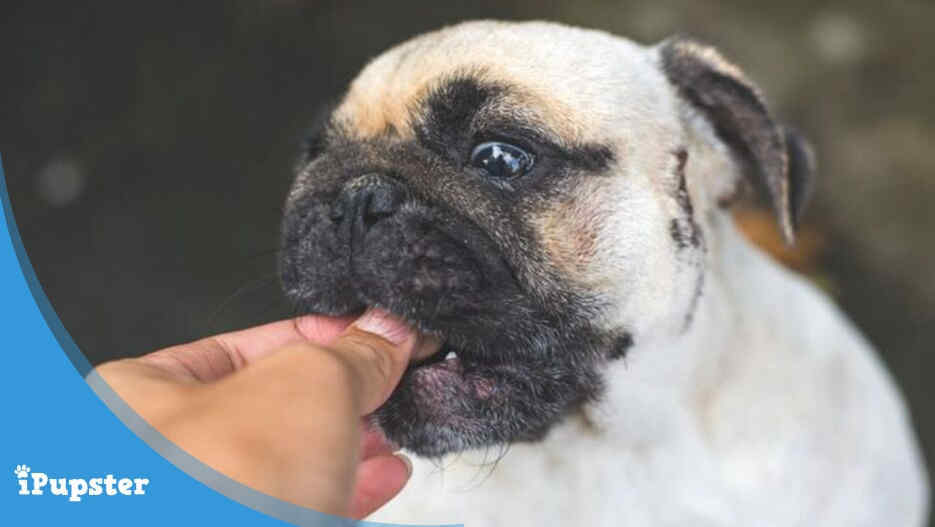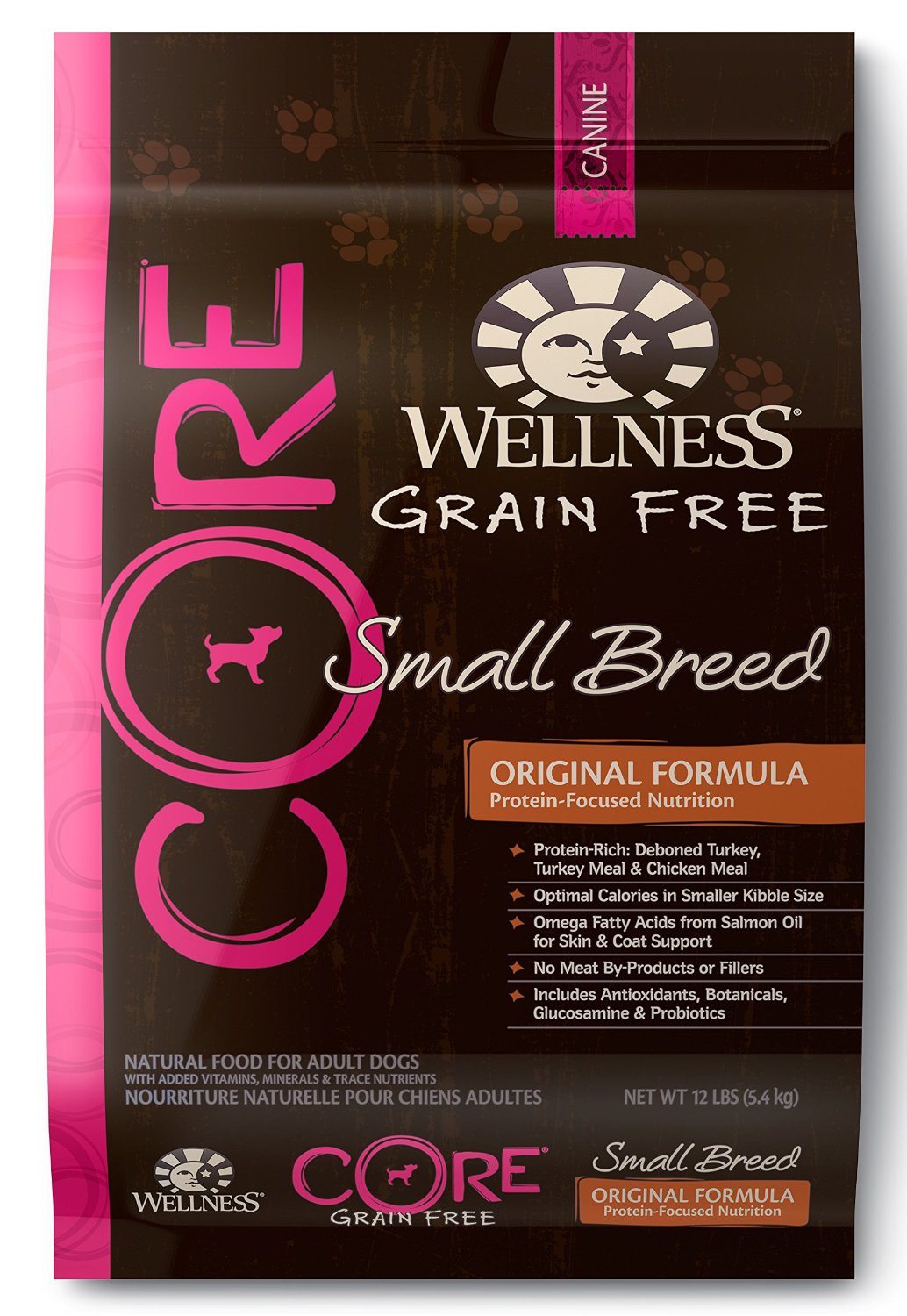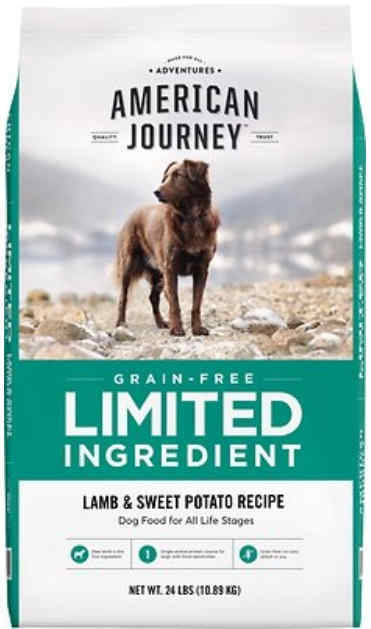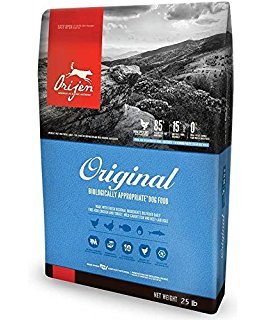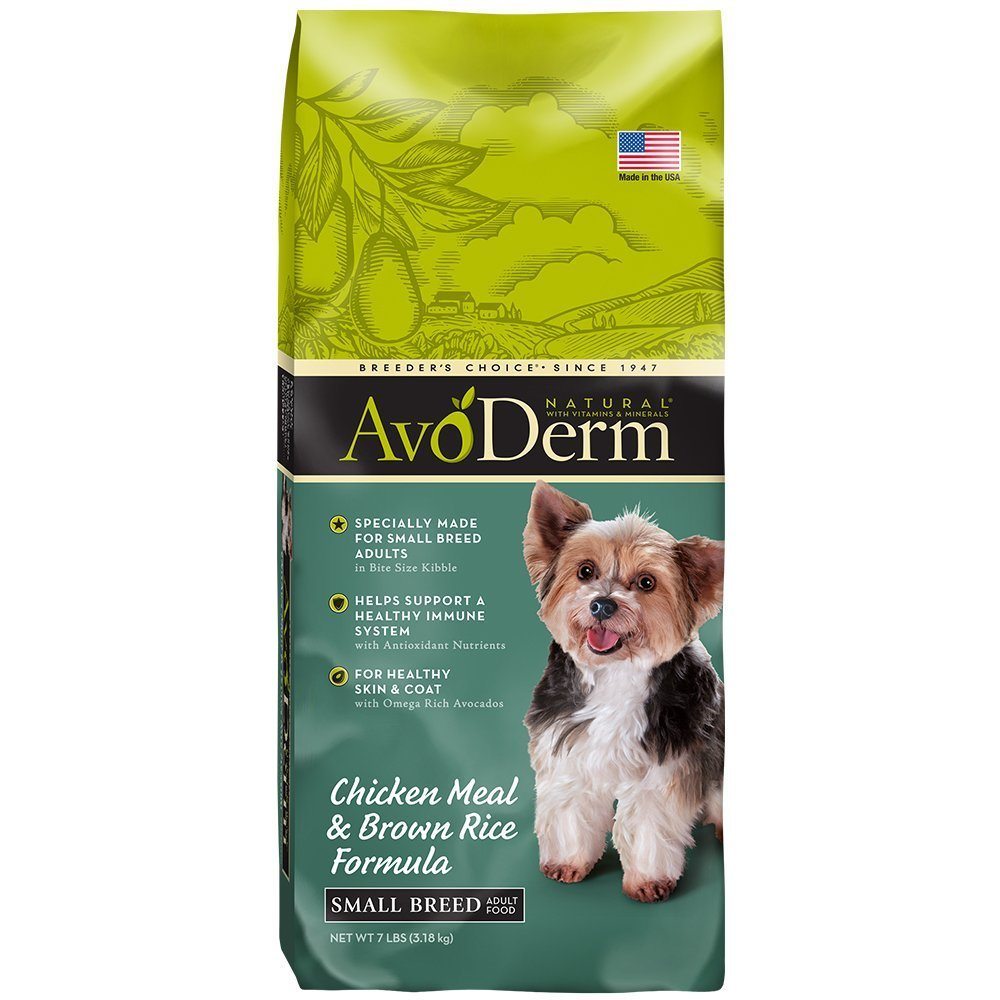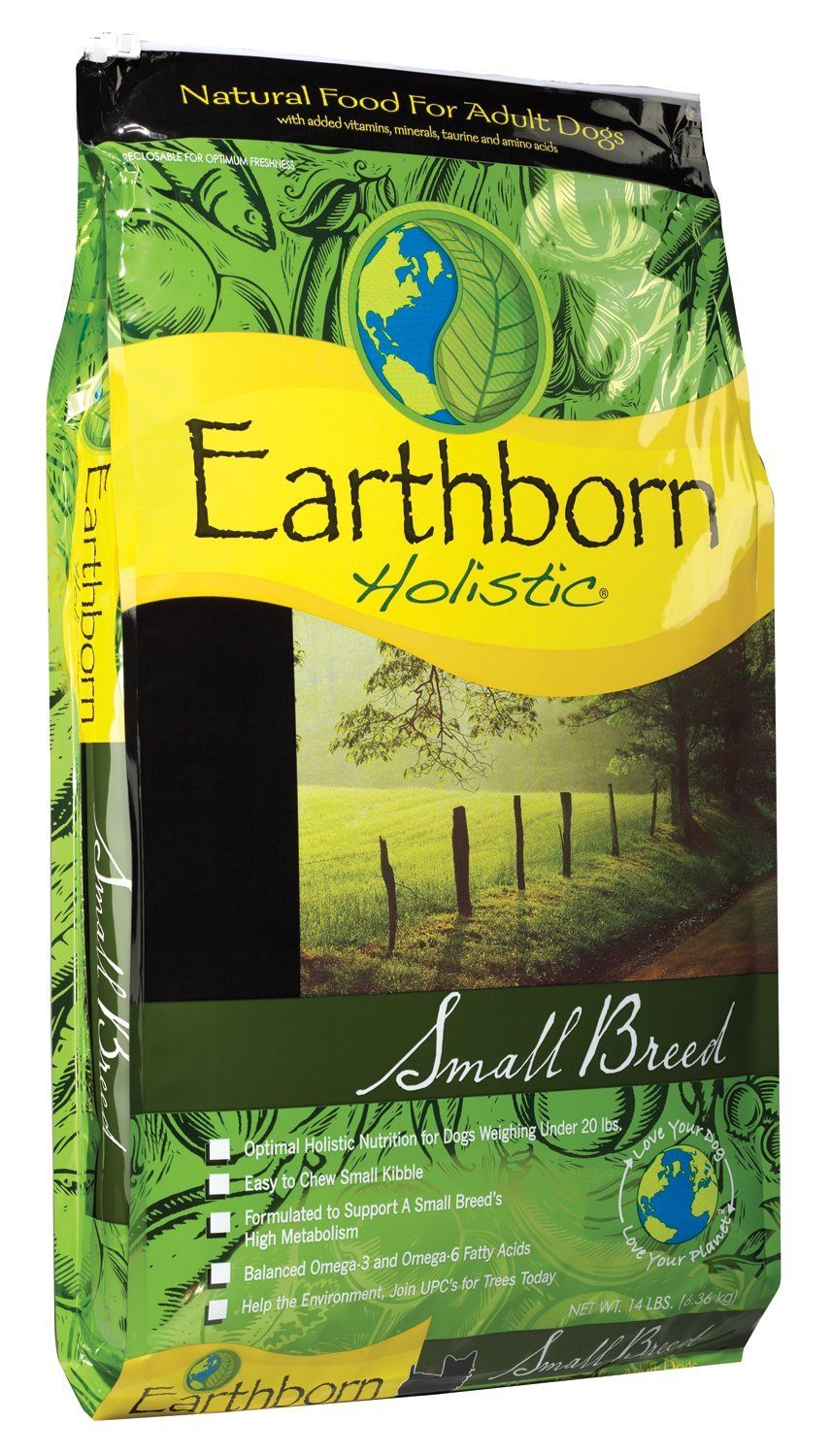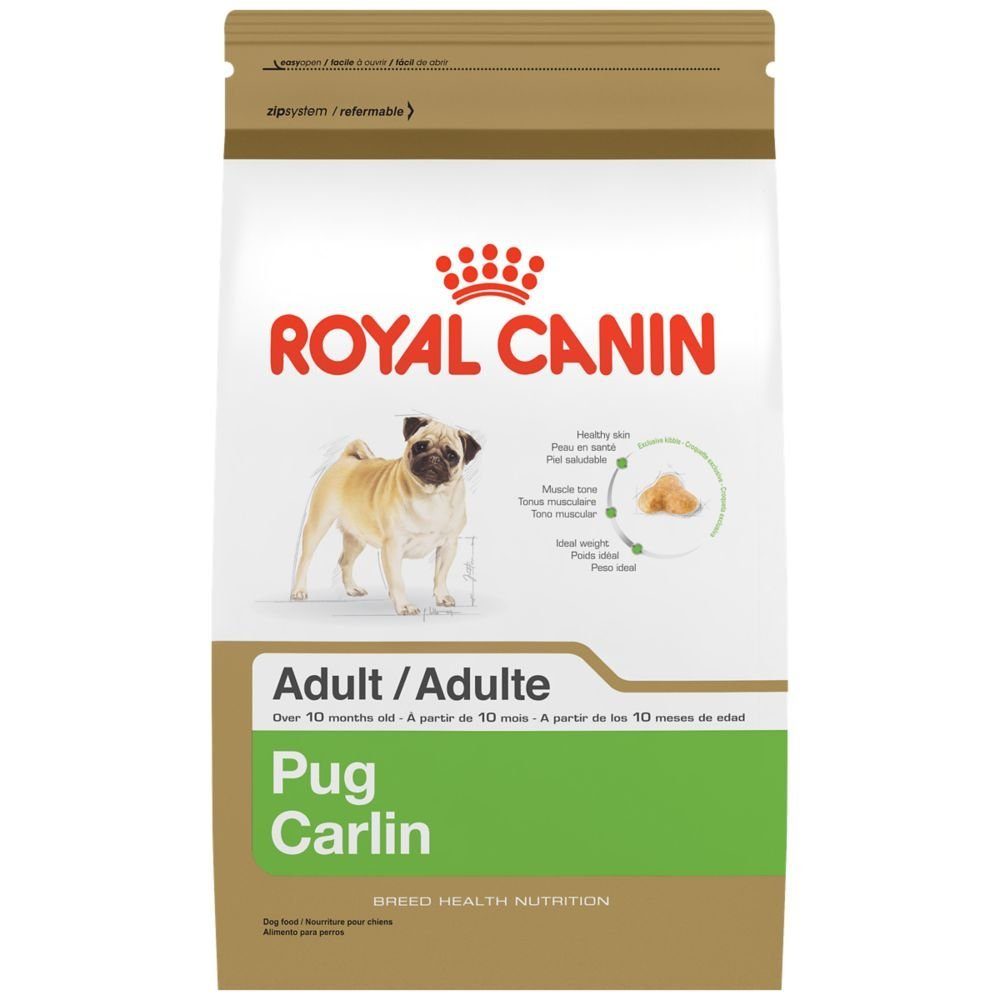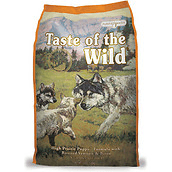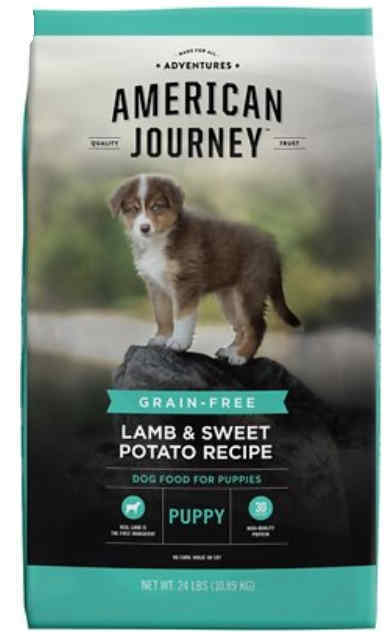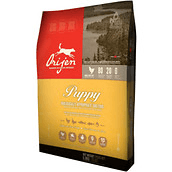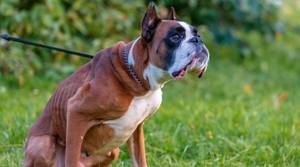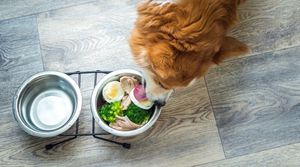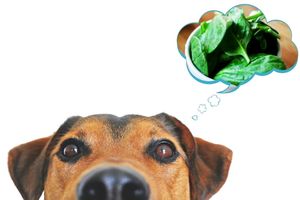What's the best dog food for Pugs?
Small breed dogs have different nutritional requirements to medium and large-breed dogs. For starters they have a smaller stomach capacity, they tend to burn more energy and have smaller teeth and mouths so choosing foods that are easy to chew on is important too.
Below is a shortlist of our best-rated dry dog food for Pugs.
And where indicated… puppies, too.
Pug breed characteristics
Pugs are a small breed that people either love to death or find a little strange looking. Pug lovers finds them adorable, with their soulful, beady eyes and cute squished-in faces. They make entertaining and lovable companions for families with children or singles, and can do well in large or small spaces.
The Pug is a very sociable dog, but quite stubborn. The breed even has its own motto associated with it: “multum in parvo” (a lot [of dog] in a little package). The Pug is a popular breed for a house-pet, as it is easy to groom (though it sheds substantially more than other dogs of similar size, thus the Pug is not a hypoallergenic breed). However, a pug likes to consider himself the boss.
Pugs are true “lap dogs”, in that they most often want nothing more than to curl up in their owner’s lap (and perhaps a snack).
They require regular exercise, and some Pugs will walk for an hour or more. When exercising a Pug, however, it's important to make sure they do not overheat, as their short noses do not cool them off as easily as those of longer-nosed breeds. Pugs are generally compatible with most children and other animals.
Some Pugs, like many dogs, suffer from separation anxiety; that is, when they are left alone, they bark and whine. Pugs are capable of being trained to stop their crying.
Best Diet For Pugs: What To Look For
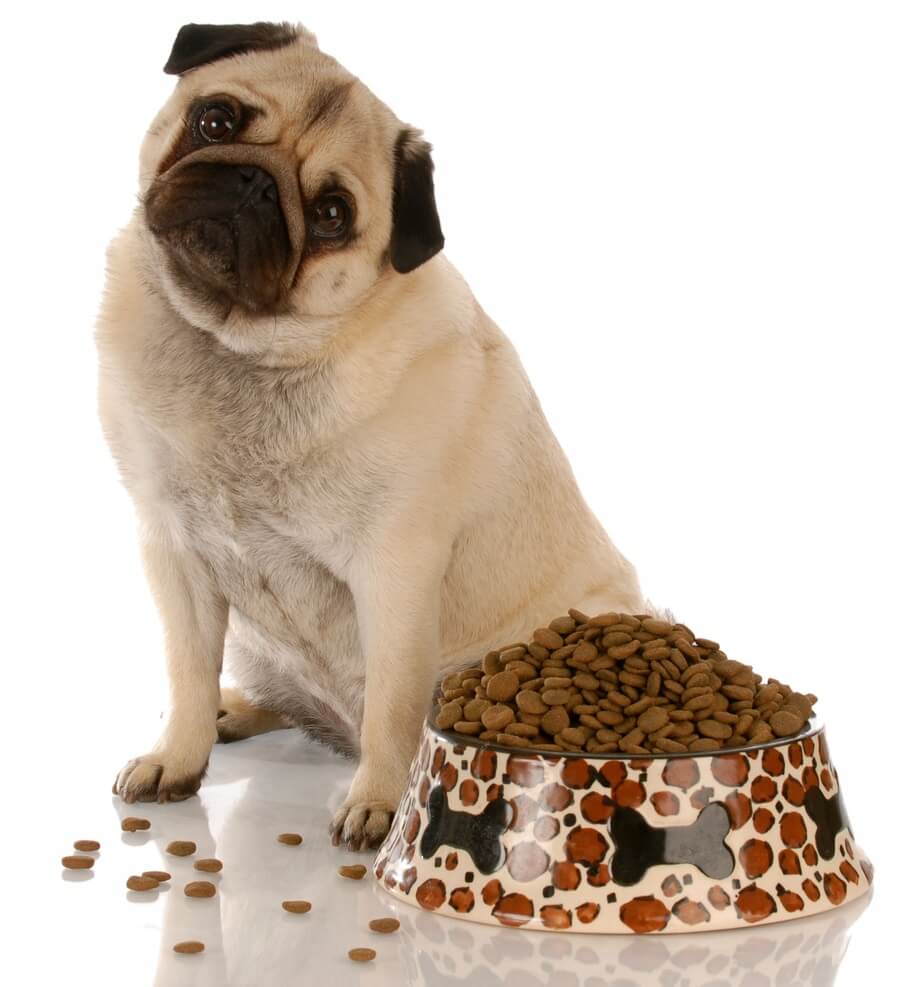
Pugs aren’t very picky when it comes to their diet, but you should settle on a brand whose main ingredients consist mostly of meat, fruits, and vegetables. Keep in mind that ingredients lists go in order of quantity, so if fillers like grain and wheat are the top ingredients it could lead to poor health, digestive issues, and allergies for many dogs.
How to get a pug to lose weight if it's obese?
Well, the ideal diet for Pugs contains meats (chicken breast, fish, liver) as the main ingredient, followed by healthy starches (brown rice, baked potato), vegetables (green beans, peas, carrots, broccoli) and fruits (the berry variety, bananas, pumpkin).
Premium dog food brands make sure that dogs have everything they need for complete health like whole, natural ingredients, vitamins, and minerals. The top five brands we review below come highly recommended by numerous dog owners who have seen significant health improvements after switching to these brands.
Feeding Pugs
Small dogs can be fed two meals a day, once in the morning and once in the evening.
Since they are a smaller breed, you can also choose to only feed your Pug once a day. Start by consulting the information on the label and follow the recommended feeding instructions based on your pup's weight.
Adjusting your dog’s portions based on their activity levels and age, but be careful not to overfeed Pugs. For proper nutrition, it is also important that dogs should always have fresh, clean water available.
How much food should a Pug eat?
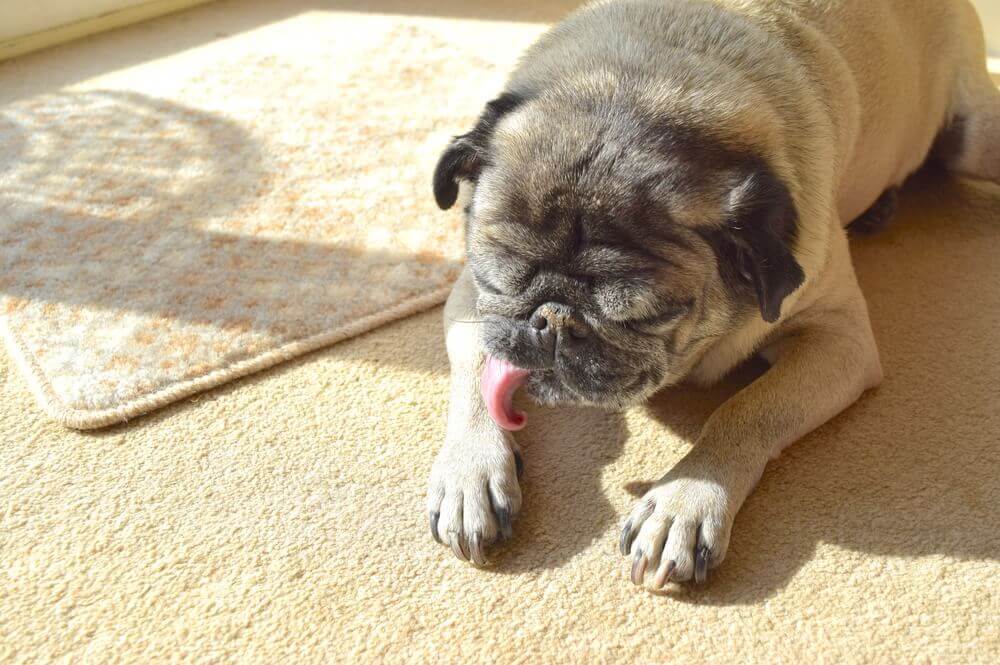
Pugs should not have food available all the time, because Pugs are prone to gaining weight fast and being overweight leads to worse health problems in the long run.
Pugs often suffer from joint problems if they become overweight, because of their body to leg ratio.
So in terms of how much should a pug weigh? Well, the ideal or average pug weight for males is 14 - 19 pounds and females being between 13 - 18 pounds.
The recommended calorie guideline to feed Pug adults is around 40 for each pound of body weight and should eat 1/2 ounce per pound of weight once a day in addition to some healthy snacks.
Decide to either one or two meals a day and try to stick to a routine once you find one that works.
The Best Dog Food for Pugs
Let's start by reviewing the best dog food brands for adult Pugs and Pug puppies to give them the best start in life.
Take advantage of special offers from Chewy.com or Amazon who almost always have offers on many of the below foods to find the best prices.
Best-Seller: Wellness Core Small Breed Original
Best Value: American Journey Limited Ingredient Grain-Free Lamb & Sweet Potato
First Five Ingredients: Deboned Lamb, Lamb Meal, Sweet Potatoes, Peas, Pea Starch.
Many dogs suffer from food allergies and the Pug is not exempt. If your Pup has a sensitive stomach or he suffers from food allergies or food intolerance, consider this American Journey LID Grain-Free Lamb & Sweet Potato kibble.
Made using just a limited number of quality ingredients to reduce the risk for triggering allergic reactions. It is a grain-free kibble without any chicken or chicken meal in the recipe, using deboned lamb as the main protein. Lamb is a great substitute to poultry since it's high yet a leaner source of protein. Lamb meal is added along with some other key nutrients such as flaxseed, fish oil and canola oil as a concentrated source of energy. Sweet potato is a complex carb that is easy to digest and peas are a source of both protein and fiber. This product is formulated for all life stages.
This recipe also contains a plethora of vitamins and minerals. We'd have liked to have seen a few more fruits and veggies added but since this is a limited ingredient diet it's formulated to combat allergies while still providing a balanced diet. Dogs seem to love the taste and texture of this kibble, including pugs with the main reviews pointing to clearing up skin irritations, weight maintenance and firmer stools. This food has only 330 kcal/cup.
American Journey is our best value food for clearing up allergies in your Pug that is both affordable and tasty for dogs too! It is Chewy's own in-house brand, currently offering 50% off the first bag, its recipes are made in California, USA and you can choose from four other tasty LID formulas, including Duck, Salmon, Turkey or Venison.
Best for all life stages: ORIJEN Original
First Five Ingredients: Fresh chicken meat (13%), fresh turkey meat (7%), fresh whole eggs (7%), fresh chicken liver (6%), fresh whole herring (6%).
Orijen was voted Pet Food of the Year for the last three years because of their focus on healthy, natural dog food. Their adult dry dog food blend has 80% meat ingredients and 20% fruits and vegetables to give dogs the protein and nutrients that they need to live healthy, active lives. Orijen is also grain free, which means that it is better for pugs and won’t trigger any allergies or skin sensitivities. This formula offers 38% crude protein and 18% fat, plus it has an array of essential amino acids.
Some ingredients in the Orijen Original formula we love include fresh chicken, turkey, whole eggs, mackerel, green peas, pumpkin, carrots, apples, and spinach. This blend has everything that dogs need from Omega 3 and 6 fatty acids for skin and coat health to glucosamine and chondroitin, which are good for dogs’ joints. It has 470 kcal/cup distributed to support peak conditioning: 39% from protein, 19% from vegetables and fruits, and 42% from fat.
This recipe comes highly rated by dog owners on Amazon and DogFoodAdvisor.com with picky dogs who couldn’t stick to any brand before landing on Orijen. A lot of people have had success switching their dogs to this food to rid their furry friends of allergies, skin issues, and digestive problems. To their relief, Orijen did the trick thus we class this brand as the best food for pug dogs.
Best With Grains Dog Food: AvoDerm Small Breed Adult Chicken Meal & Brown Rice
Pug health issues and dietary fixes
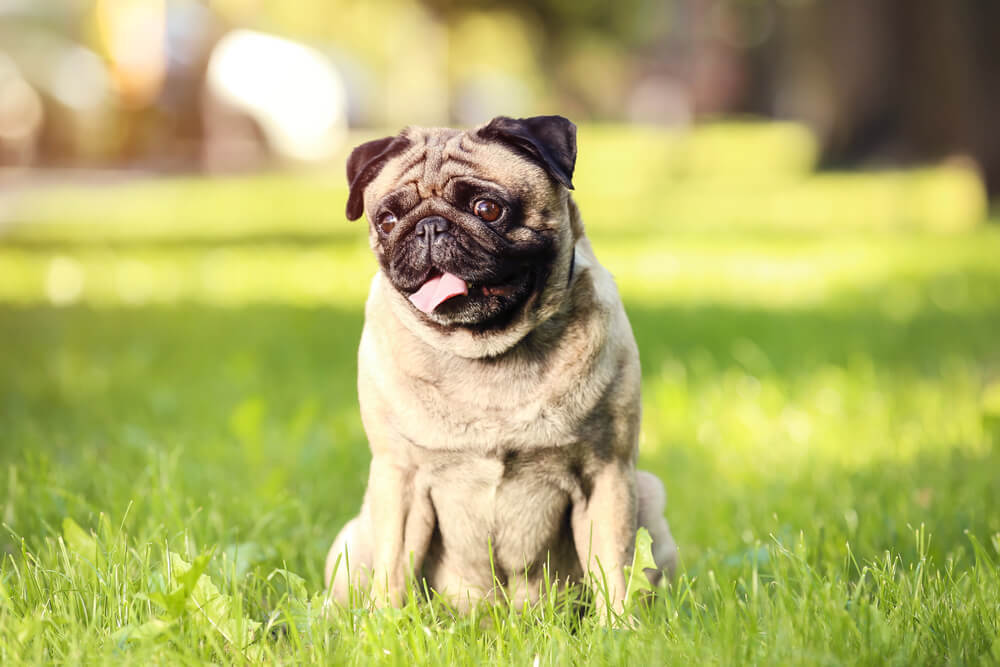
Eye concerns and skin allergies
Because they have extremely short snouts and no skeletal brow ridges, Pugs can easily scratch their corneas (corneal ulcer) or puncture their eyeballs. Their short noses can also cause them to develop breathing problems.
They are also prone to skin infections if the crevices in their faces are not kept clean.
Additionally, Pugs are prone to skin allergies, which if not treated can lead to infection as the Pug scratches the inflamed areas. The breed’s characteristic flat face may also contribute to tooth and mouth problems.
Pugs typically love to eat, and so are prone to obesity; they can quickly reach unhealthy weights. If you own an obese pug ensure they get enough regular exercise and be more restrictive with their diet.
Most premium dog food blends contain ingredients like Omega 3 and 6 fatty acids to help with dogs’ skin and coat health along with other ingredients that contribute to healthy eyes like carrots, kale, broccoli, blueberries, and sweet potatoes.
Overheating
Due to their short snouts, Pugs are vulnerable to temperature extremes. It is important to make sure that they do not overheat in hot weather, and likewise they should not be left outside in very cold weather. They also have problems swimming and can drown if left unattended near a pool.
So watch out for the warning signs.
Some symptoms of overheating that could lead to heatstroke are heavy panting, glazed eyes, excessive thirst and increased body temperature.
Pugs can also suffer from a chronic form of granulomatous meningoencephalitis (an inflammation of the brain) specific to the breed called Pug Dog Encephalitis (PDE). PDE is estimated to occur in 1% of Pugs.
There is no known cause or cure for PDE, although it is believed to be an inherited disease. PDE is invariably fatal. All dogs either die or are euthanized within a few months after the onset of clinical signs.
Joint problems
Pugs sometimes suffer from joint problems like hip dysplasia, which is an inherited disease that affects the ball and socket of the hip joint. It can be hard to tell if a Pug has hip dysplasia unless they hurt themselves somehow, but some symptoms include limping, hind leg stiffness, and trouble with stairs.
Take preventative measures in this situation by feeding your Pug dog food that contains joint-protecting ingredients like glucosamine and chondroitin and dog ramps to help them get into cars or jump onto furniture without causing further injuries.
We’d love to know what our readers are feeding their Pugs! Have you found an exceptional food that we missed on our list? Have you had any unfortunate experiences with these or other brands? Drop us a comment below.
Want more tips on Pug care? Be sure to check out our guides on:

